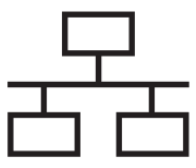The euphoria around microservices has decreased over the years, but the trend of modernizing legacy systems to this novel architectural style is unbroken to date. A variety of approaches have been proposed in academia and industry, aiming to structure and automate the often long-lasting and cost-intensive migration journey. However, our research shows that there is still a need for more systematic guidance. While grey literature is dominant for knowledge exchange among practitioners, academia has contributed a significant body of knowledge as well, catching up on its initial neglect. A vast number of studies on the topic yielded novel techniques, often backed by industry evaluations. However, practitioners hardly leverage these resources. In this paper, we report on our efforts to design an architecture-centric methodology for migrating to microservices. As its main contribution, a framework provides guidance for architects during the three phases of a migration. We refer to methods, techniques, and approaches based on a variety of scientific studies that have not been made available in a similarly comprehensible manner before. Through an accompanying tool to be developed, architects will be in a position to systematically plan their migration, make better informed decisions, and use the most appropriate techniques and tools to transition their systems to microservices.
翻译:过去几年来,围绕微观服务的兴奋情绪有所下降,但使遗留系统现代化的趋势与这种新型建筑风格相适应的趋势至今没有中断,学术界和工业界提出了各种办法,目的是为往往长期和成本密集的移徙旅程提供结构和自动化,然而,我们的研究表明,仍然需要更系统化的指导。虽然灰色文献在从业人员之间的知识交流中占主导地位,但学术界也贡献了大量知识,赶上了最初的忽视。大量关于这一专题的研究产生了新的技术,往往得到行业评价的支持。然而,实践者很少利用这些资源。在本文件中,我们报告了我们为设计以建筑为中心向微观服务迁移的方法所作的努力。作为其主要贡献,一个框架为在移徙的三个阶段的建筑师提供了指导。我们提到了基于各种科学研究的方法、技术和方法,这些方法以前没有以类似易懂的方式提供。通过开发一个辅助工具,建筑师将有能力系统地规划其迁移,作出更知情的决定,并使用最适当的技术和工具将其系统过渡到微观服务。












